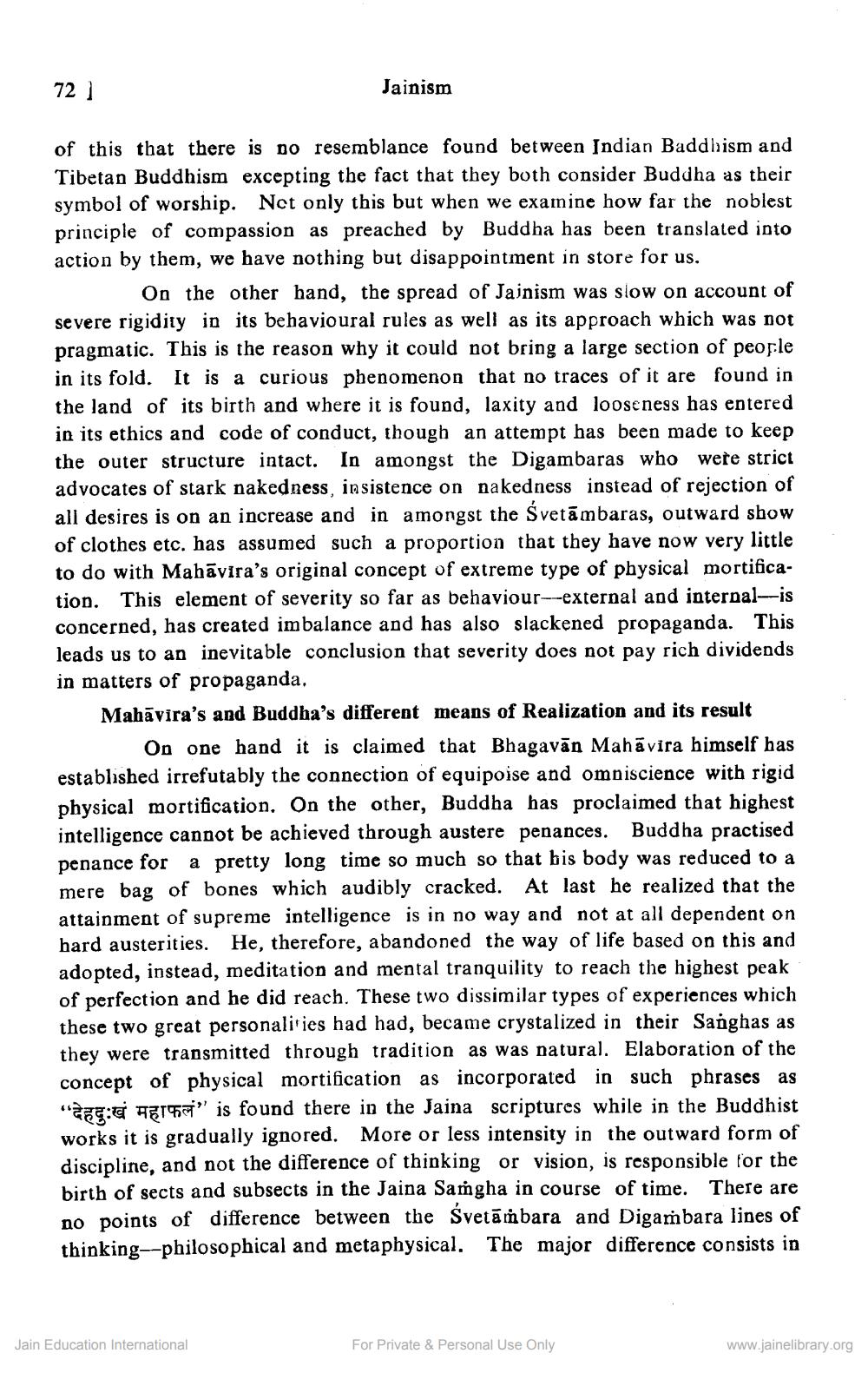________________
72]
Jainism
of this that there is no resemblance found between Indian Baddhism and Tibetan Buddhism excepting the fact that they both consider Buddha as their symbol of worship. Not only this but when we examine how far the noblest principle of compassion as preached by Buddha has been translated into action by them, we have nothing but disappointment in store for us.
On the other hand, the spread of Jainism was slow on account of severe rigidity in its behavioural rules as well as its approach which was not pragmatic. This is the reason why it could not bring a large section of people in its fold. It is a curious phenomenon that no traces of it are found in the land of its birth and where it is found, laxity and looseness has entered in its ethics and code of conduct, though an attempt has been made to keep the outer structure intact. In amongst the Digambaras who were strict advocates of stark nakedness, insistence on nakedness instead of rejection of all desires is on an increase and in amongst the Svetāmbaras, outward show of clothes etc. has assumed such a proportion that they have now very little to do with Mahāvira's original concept of extreme type of physical mortification. This element of severity so far as behaviour--external and internal-is concerned, has created imbalance and has also slackened propaganda. This leads us to an inevitable conclusion that severity does not pay rich dividends in matters of propaganda. Mahāvira's and Buddha's different means of Realization and its result
On one hand it is claimed that Bhagavān Mahāvira himself has established irrefutably the connection of equipoise and omniscience with rigid physical mortification. On the other, Buddha has proclaimed that highest intelligence cannot be achieved through austere penances. Buddha practised penance for a pretty long time so much so that bis body was reduced to a mere bag of bones which audibly cracked. At last he realized that the attainment of supreme intelligence is in no way and not at all dependent on hard austerities. He, therefore, abandoned the way of life based on this and adopted, instead, meditation and mental tranquility to reach the highest peak of perfection and he did reach. These two dissimilar types of experiences which these two great personalities had had, became crystalized in their Sanghas as they were transmitted through tradition as was natural. Elaboration of the concept of physical mortification as incorporated in such phrases as "देहदुःखं महाफलं" is found there in the Jaina scriptures while in the Buddhist works it is gradually ignored. More or less intensity in the outward form of discipline, and not the difference of thinking or vision, is responsible for the birth of sects and subsects in the Jaina Samgha in course of time. There are no points of difference between the Svetāṁbara and Digambara lines of thinking--philosophical and metaphysical. The major difference consists in
Jain Education International
For Private & Personal Use Only
www.jainelibrary.org




